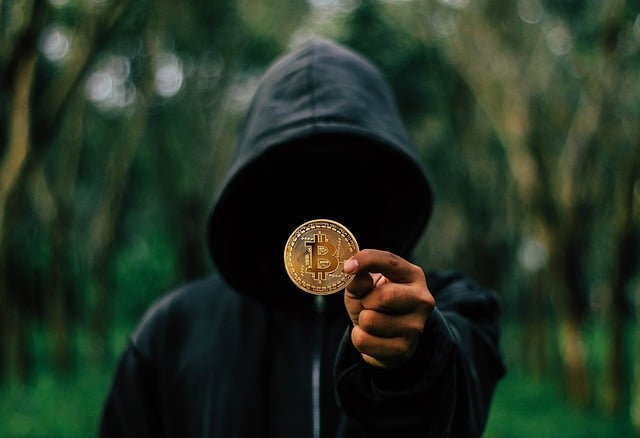Cryptocurrency exchanges are generally necessary to trade the crypto you have for the crypto you want. You might buy a major crypto at a source like Coinbase or Gemini, but you’ll need to transfer it to another exchange to buy most altcoins. With over 25,000 cryptocurrencies available, learning how to use exchanges is crucial for buying most of them.
However, crypto exchange scams are entirely too common. These scams typically involve a completely fake exchange, either mimicking a popular one or a new made-up company attempting to appear legitimate. Once you transfer your coins, you no longer have access to them and may lose them forever.
That’s why learning how to identify fake cryptocurrency exchanges is crucial to being a long-term crypto investor. You’ll be able to avoid sending assets to the wrong company and keep investing intelligently.
Keep reading to learn the major warning signs of a fake exchange so you can stay safe while trading.
The Importance of Identifying Fake Cryptocurrency Exchanges
A fake cryptocurrency exchange can result in completely losing access to your funds. Some exchanges are complete scams; it’s gone once you transfer your crypto. Others may provide actual services and allow you to withdraw, but high transaction fees and withdrawal limits result in losing funds or having the deposit more to withdraw.
Identifying fake cryptocurrency websites is an essential skill any crypto investor must learn. Sadly, many websites are only scams set up to convince you to transfer crypto with no way to reclaim it.
Cryptocurrency exchanges are no exception. Understanding when an exchange might be fake or exploitative is vital to securing your crypto investments. Fortunately, you can learn how to investigate any potential exchange to avoid
Risks Associated With Using Cryptocurrency Exchanges
All cryptocurrency exchanges invite a certain amount of risk to buying or selling cryptocurrency. The leading exchanges have minimal risks, while lesser-known exchanges have higher risks.
Even the most popular exchanges out there might still freeze withdrawals of specific cryptos, be targeted by a sophisticated cyber attack, or have your individual user account might be compromised.
These risks are part of using an exchange, and they’re why a standard piece of advice is never to leave your money sitting in an exchange’s account. You should store your crypto in your wallets, only transferring to an exchange to make trades.
The further away you get from the top exchanges, the more risks you take. Some exchanges may not be outright scams but may have high transaction costs or ineffective cybersecurity.
The worst case scenario is an entirely fake exchange set up to convince you to transfer crypto to an account or swap address; then, you lose control over it entirely. Sometimes these exchanges will mimic popular sites; other times, they continually try to appear genuine but have incredibly high withdrawal limits.
Fake exchanges will also disappear once the scammers have decided their cover is blown, taking everyone’s coins. So it’s well worth learning how to evaluate an exchange to help keep your funds secure.
Evaluating a Cryptocurrency Exchange for Legitimacy
As you continue investing in crypto, you’ll frequently discover that some altcoins can only be bought on lesser-known exchanges. Not all of these less popular exchanges are scams; many of them are more willing to list newer altcoins than the more prominent exchanges might be.
However, plenty of these lesser exchanges will be scams, so you need to know how to evaluate an exchange to protect your crypto.
Consider Trading Volume
Trading volume isn’t a clear sign of a scam or legitimacy, but it’s an excellent place to start when evaluating a potential exchange. Low trading volume for your chosen currency pair might be expected, but low volume is suspicious if it’s a popular pair.
Additionally, be aware that a fake exchange can simply fake trading volume. You can look at third-party trackers to understand the overall volume of your cryptos to understand if the volume is being faked or inflated.
What are the Withdrawal Limits?
One way crypto exchanges can continually scam users is by having withdrawal limits. You might be able to deposit any amount, but after you’ve made your trade, you don’t have enough money to withdraw any. You’re then forced to send in more money to withdraw, which may also be lost.
A similar tactic is to have unusually high withdrawal fees. You might still be able to withdraw at the cost of a significant amount of what you deposited.
By employing these tactics, exchanges can deflect claims that they’re scams by saying these limits and fees are how they operate. They can then keep drawing in new users who are entirely unaware of the fine print.
Are Your Funds Insured?
Traditional financial institutions have insurance to protect any funds they hold on your behalf. If something happens, your funds are guaranteed up to the stated limit.
While this type of insurance is not required for a crypto exchange, many leading exchanges will still have similar insurance as a traditional institution.
Does the exchange you’re considering carry insurance? If so, that’s a strong indication that it’s not a scam but not a guarantee. Additionally, not having insurance doesn’t necessarily mean the exchange is a scam.
Insurance is just one more thing to investigate when evaluating a new exchange and should be considered alongside everything else on this list.
Conduct Thorough Due Diligence
Do Your Own Research (DYOR) is a frequent phrase in the crypto community because there are so many companies, projects, and blockchains that nobody has all the answers. Due diligence means doing your own research before investing or transferring any funds to a new project or service.
Being a savvy crypto investor requires learning how to research any new service properly. The above items cover the basics of investigating a crypto exchange, but there are many other angles to investigate before transferring your funds.
New fake exchanges show up daily, so it’s worth checking a list of fake crypto exchanges while researching a new potential exchange. If the exchange appears on a list of fake or questionable exchanges, it’s better to move on.
Additionally, consider any public-facing names, such as the CEO or other C-suite executives. Are they real people with active social media profiles? Or are they missing or seem like complete fabrications?
The newer or less popular the exchange, the more time you should spend researching it before transferring your funds. A brand new, unknown isn’t necessarily a scam, but you need to be absolutely sure before potentially losing your crypto.
Steps to Take If You Are a Victim of a Fake Exchange
Once you’ve realized you’ve fallen for a fake exchange, it’s time to take action to attempt to reclaim stolen funds and potentially prevent other people from being scammed. Let’s review what you can do immediately after losing your funds:
- Document all involved details: Gather all pieces of information involved with the scam. You’ll need to have the following:
- How much was lost
- What cryptos were lost
- Transaction IDs
- Involved wallet addresses
- Username at the exchange
- Any other specific information about the scam
- Report the fraud to relevant authorities: Your jurisdiction likely has a method to report digital currency scams. State or federal authorities tend to have systems in place to report fraud, and as cryptos have gained popularity, many have adapted to virtual currencies.
- Change login credentials of any other accounts: Any other accounts that may be associated with the fake exchange, such as email accounts, may also be vulnerable. Take a few minutes to change the passwords of any accounts the scammers may know about.
- Consider hiring crypto recovery experts: Crypto recovery agencies will attempt to track down the scammers by using cyber intelligence and blockchain expertise to find the current holder of your stolen coins. Then, legal teams will work with law enforcement to reclaim your stolen funds.
- Be cautious moving forward: Whether you’re able to reclaim your stolen funds or it’s gone forever, be careful not to repeat the same mistakes. On top of the tips we discussed above, you can also use cold wallets for long-term storage and only transfer small amounts to exchanges to make trades when necessary.
You might be able to reclaim your stolen funds, but if not, you can rebuild your portfolio as a more savvy investor. You’ll be more prepared the next time you come across a questionable exchange.
Lost Funds on a Fake Exchange? Lionsgate Can Help
Fake exchanges are operated by scammers, not legitimate companies providing you with a service. Once the scammers have your money, it’s possible you may never see it again, but there are ways to attempt to reclaim your crypto.
Crypto recovery agencies can help you recover funds stolen by hackers or scammers, including fake exchanges. Fortunately, blockchain technology allows your funds’ movement to be tracked, making it possible to find the real-world identity of the scammers.
Lionsgate is an industry leader in reclaiming stolen cryptocurrency due to our expertise in blockchain analysis, cyber intelligence, and legalities. Combined, we’re equipped to locate the real-world identities of the scammers, then pursue legal action against them.
Ready to see if we’re able to recover your crypto? Contact us today to book a consultation call so we can learn more about your case before we begin.















